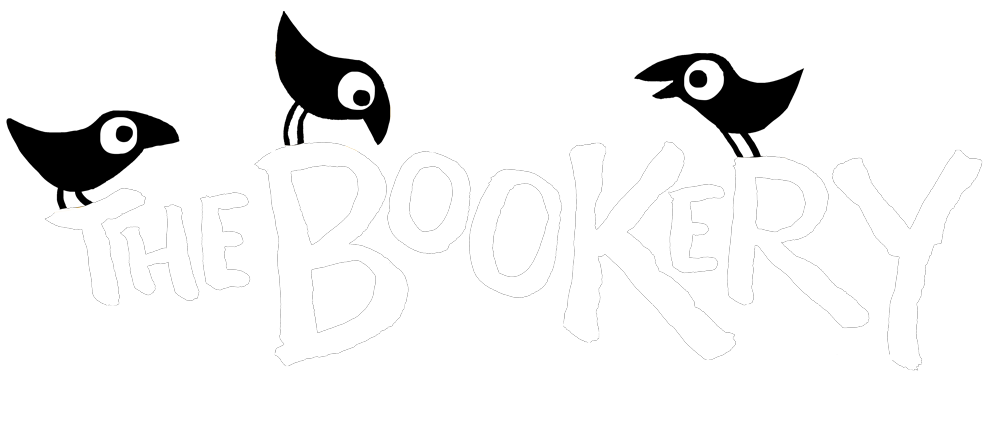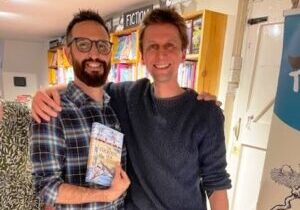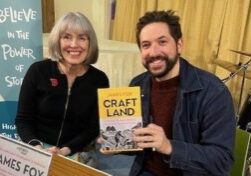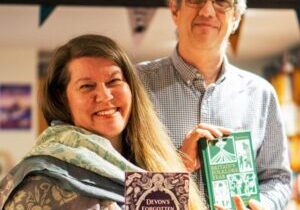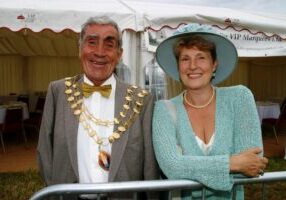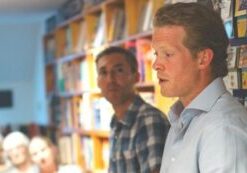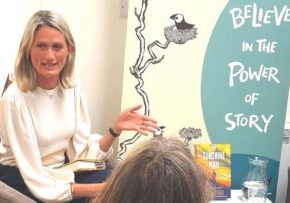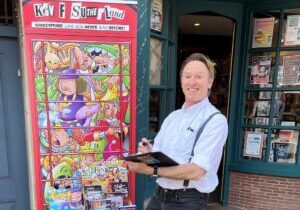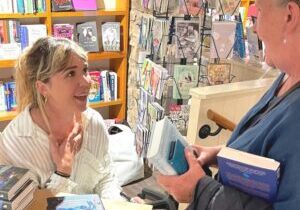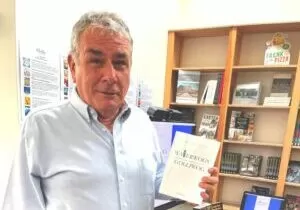FEATURES
Walking The Shetland Way (With Marianne Brown!)
April 1, 2025 | Blog > Features > Walking The Shetland Way (With Marianne Brown!)
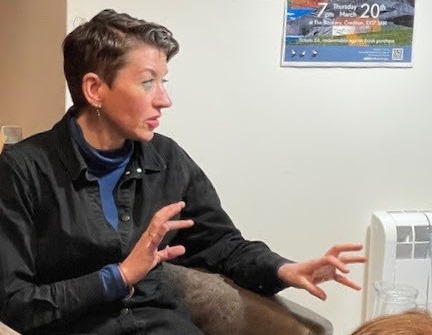
Five years on from the start of the pandemic, The Bookery marked this somewhat melancholy anniversary by welcoming author and environmental journalist Marianne Brown, who’s recently launched book The Shetland Way was conceived in the first months of lockdown. Marianne arrived in Voe, Shetland with her partner and daughter in February 2020 to attend her father’s funeral having packed only enough clothes to last a short trip, but as COVID19 swept through the UK they would be unable to leave for another six months.
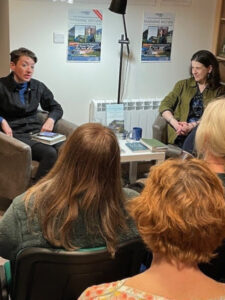 Marianne was joined in conversation by storyteller and local author Lisa Schneidau, who opened the discussion with Marianne exploring her connections to Shetland prior to attending her father’s funeral. Marianne described that Shetland was a place that she knew only in glimpses with her parents separating when she was two, that she had been brought up in Edinburgh and how her connection with the islands and her late father was forced into an accelerated intimacy from the unexpected months spent living in the house that her father that Bill, a potter, had built alongside the ruins of his grandparents’ croft. It was absorbing listening to Marianne describe how she developed a far greater sense of connection with her ancestors than had previously been the case. We learnt how oil wealth changed the fortunes of Shetland, but that for Marianne’s family, like most of their neighbours that they are only a few generations away from the precarious life of crofters, at the mercy of unpredictable weather, crop blight and unscrupulous lairds.
Marianne was joined in conversation by storyteller and local author Lisa Schneidau, who opened the discussion with Marianne exploring her connections to Shetland prior to attending her father’s funeral. Marianne described that Shetland was a place that she knew only in glimpses with her parents separating when she was two, that she had been brought up in Edinburgh and how her connection with the islands and her late father was forced into an accelerated intimacy from the unexpected months spent living in the house that her father that Bill, a potter, had built alongside the ruins of his grandparents’ croft. It was absorbing listening to Marianne describe how she developed a far greater sense of connection with her ancestors than had previously been the case. We learnt how oil wealth changed the fortunes of Shetland, but that for Marianne’s family, like most of their neighbours that they are only a few generations away from the precarious life of crofters, at the mercy of unpredictable weather, crop blight and unscrupulous lairds.
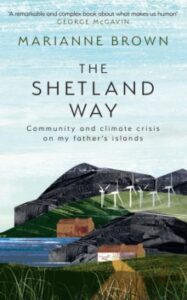 Lisa then led Marianne to discuss how came to learn of plans to build a large-scale onshore windfarm of 103 turbines, each 145 metres high, along the spine of the island. Marianne described how by discussing the conflicting arguments for and against the windfarm with the people of Shetland how she came to appreciate how controversial and divisive transitioning away from fossil fuels to renewable energy is amongst the people of Shetland. Marianne stressed the need for the transition to green energy needs to be a just transformation. She explained that through her discussions she got to know great deal more about her father and came to see Shetland as a kaleidoscope of multi layered and continuously changing community. Throughout the evening Marianne provided us with her experiences of life in Shetland including how you park your car in a way as to ensure that the door does not get whipped off when you open it, to the Shetland cabbage/kale which is the oldest known vegetable variety and has grown on the Shetland Islands since at least the 17th Century. Marianne read a passage from the book featuring the walled garden at her father’s house and Scottish crofting rights, and went onto to share with the audience the how the Red -throated Diver known as the Rain Goose living in the remote hill lochs located in areas of peat bog are famous for their mournful wale which is renowned for predicting and ‘calling in’ the weather.
Lisa then led Marianne to discuss how came to learn of plans to build a large-scale onshore windfarm of 103 turbines, each 145 metres high, along the spine of the island. Marianne described how by discussing the conflicting arguments for and against the windfarm with the people of Shetland how she came to appreciate how controversial and divisive transitioning away from fossil fuels to renewable energy is amongst the people of Shetland. Marianne stressed the need for the transition to green energy needs to be a just transformation. She explained that through her discussions she got to know great deal more about her father and came to see Shetland as a kaleidoscope of multi layered and continuously changing community. Throughout the evening Marianne provided us with her experiences of life in Shetland including how you park your car in a way as to ensure that the door does not get whipped off when you open it, to the Shetland cabbage/kale which is the oldest known vegetable variety and has grown on the Shetland Islands since at least the 17th Century. Marianne read a passage from the book featuring the walled garden at her father’s house and Scottish crofting rights, and went onto to share with the audience the how the Red -throated Diver known as the Rain Goose living in the remote hill lochs located in areas of peat bog are famous for their mournful wale which is renowned for predicting and ‘calling in’ the weather.
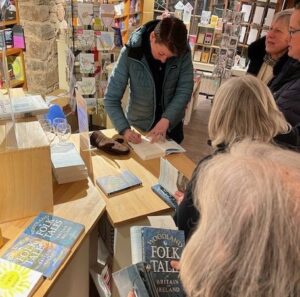 Contrasting how we relate to landscapes Lisa told us the tragic tale of Jay’s Grave, a poignant site nestled in the heart of Dartmoor, has long been a place of local legend and mystery. The grave is believed to be the final resting place of a young woman named Mary Jay, often referred to as Kitty Jay. According to local lore, Jay was an orphaned farm girl who worked as a maid in a nearby parish during the late 18th or early 19th century. She fell in love and became pregnant but was abandoned by her lover. Despondent and facing social ostracism, Jay took her own life. At that time, suicides were buried at crossroads outside consecrated grounds to prevent their souls from wandering. It is said that fresh flowers appear daily, even in harsh weather, a phenomenon that has fuelled many local legends and ghost stories.
Contrasting how we relate to landscapes Lisa told us the tragic tale of Jay’s Grave, a poignant site nestled in the heart of Dartmoor, has long been a place of local legend and mystery. The grave is believed to be the final resting place of a young woman named Mary Jay, often referred to as Kitty Jay. According to local lore, Jay was an orphaned farm girl who worked as a maid in a nearby parish during the late 18th or early 19th century. She fell in love and became pregnant but was abandoned by her lover. Despondent and facing social ostracism, Jay took her own life. At that time, suicides were buried at crossroads outside consecrated grounds to prevent their souls from wandering. It is said that fresh flowers appear daily, even in harsh weather, a phenomenon that has fuelled many local legends and ghost stories.
We wrapped up the evening with questions from the audience in which Marianne expressed how without being in Shetland at that time and grieving for her father that she would not have written the book and how by her discussions with so many different people that she came to know so much more about her father, ancestors and other family members.
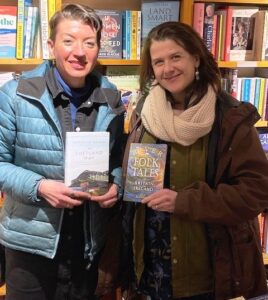 Lisa and Marianne then mingled with those who had joined us for the evening signing copies of The Shetland Way and two of Lisa’s books River Folk Tales of Britain and Ireland, and Woodland Folk Tales of Britain and Ireland- we have signed copies of The Shetland Way HERE or from visiting the bookshop.
Lisa and Marianne then mingled with those who had joined us for the evening signing copies of The Shetland Way and two of Lisa’s books River Folk Tales of Britain and Ireland, and Woodland Folk Tales of Britain and Ireland- we have signed copies of The Shetland Way HERE or from visiting the bookshop.
We thank all our customers who joined us and to both Marianne and Lisa for providing such an interesting and engaging discussion.
April 1, 2025
Blog > Features > Walking The Shetland Way (With Marianne Brown!)
